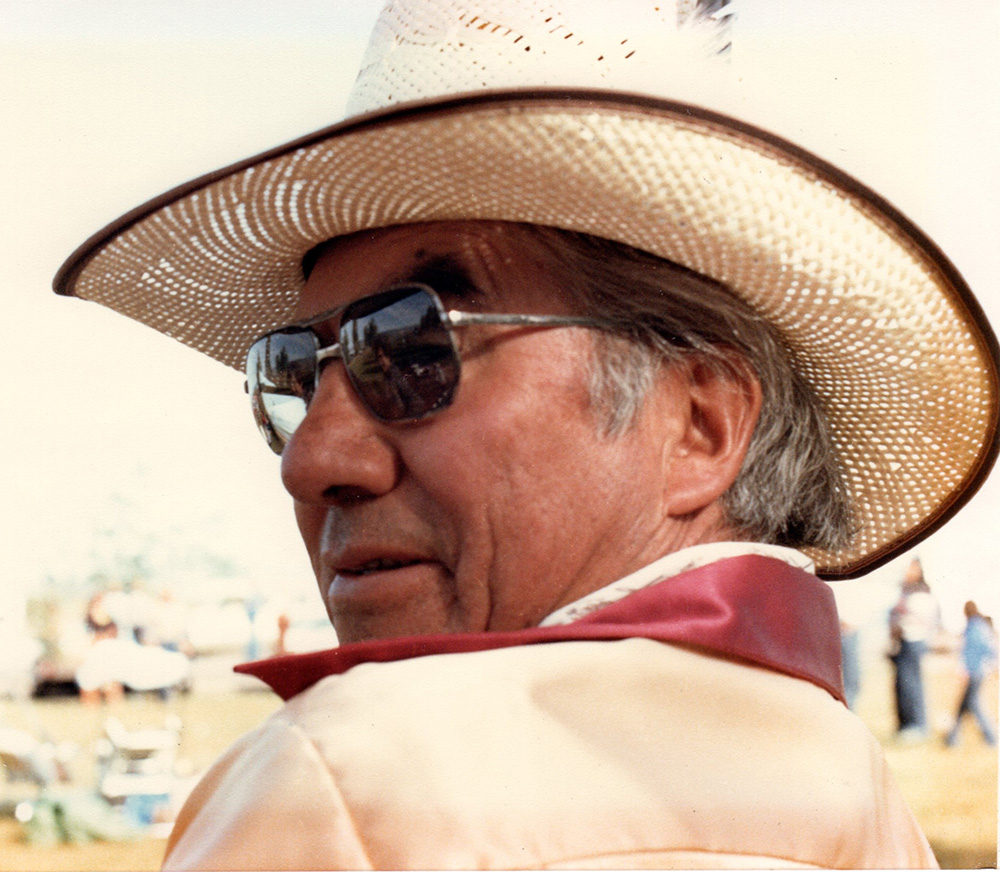

Augie Hess passed away on October 20, just five days shy of what would have been his 104th birthday. Even as a centenarian Augie lived an active lifestyle that was the envy of people many years younger. He traveled with his family, played golf as often as he could, and went to see his beloved San Francisco Giants play at AT&T Park at the age of 102.
Augie & the Mono Lake Committee
Augie’s life intersected with the Mono Lake Committee on more than one occasion. Committee staff interviewed longtime local residents as part of a project to document conditions in the Mono Basin prior to the start of DWP water diversions in 1941. Augie sat down for an interview in 1991. He described meadows with grass fed by springs, ponds with thousands of ducks and geese, fish in all the streams. He recalled that Rush Creek always had water, even when farmers and ranchers were irrigating crops and providing water to livestock. When he was a youngster Rush Creek above modern Highway 395 had no bridge: “You had to ford the creek. It was deep enough that halfway across a Model A would stall.”
These interviews with Augie and others provided valuable information that was used to inform the deliberations at the California State Water Resources Control Board hearings. Charged with restoring the Mono Basin ecosystem to pre-diversion conditions, DWP had argued that such an undertaking was impossible since no one knew what conditions had been like. Observations by scientists like Elden Vestal, as well as the firsthand knowledge of those who had lived here for generations—like Augie—proved DWP wrong.
Augie came from a musical family. In the 1930s his father Gus built a dance hall in the center of Lee Vining—his family said he built it just so that he could play music. The Hess family band, with Augie on trumpet, entertained local workers who came into town to drink and dance from mines and ranches, and from the new community of West Portal, made up of laborers constructing the northern extension of the Los Angeles Aqueduct under the Mono Craters. In the 1980s the building, known to locals as Hess Hall, was sold to the Mono Lake Committee, and it still houses most of the Committee staff. Portions of the stage remain, an ironic reminder of the previous life of the building.
Early life
Augie was born in 1914. His father Gus was a Swiss immigrant who worked as a miner, blacksmith and mechanic, and his mother Lula Charlie was a Mono Basin Paiute. He spent his early years living with his maternal grandparents on Rush Creek. In 1918, when Augie was four years old, his father was offered a job operating a garage at the Tioga Lodge and the family moved there. Four years later the family moved to the fledgling town of Lee Vining, where his father operated a garage and service station. Due to his efforts to get the town established, Gus Hess is regarded as the founder of the town of Lee Vining, and the park next to the Old Schoolhouse Museum is named after him.
Augie went to school in Lee Vining through the tenth grade and then, because Lee Vining had no high school, went to live with an uncle in Seattle where he attended a school of 2,500 students—quite different than his Lee Vining class size, which had averaged about ten students. He spent his senior year of high school in Los Angeles and then went to Pasadena College. An excellent athlete, Augie thought for a time that he might have a career as a baseball player, but that didn’t work out and he returned to Lee Vining where he worked as a mucker at the Log Cabin Mine and later for the Los Angeles Department of Water & Power (DWP) greasing and lubing equipment. He also became an accomplished skier, and frequently won local ski races. One year he was crowned the champion of Inyo-Mono County after winning the men’s downhill, slalom, and combined events. In winning the slalom he beat the defending champion, Dave McCoy, by 3/5 of a second.
Augie enlisted in the military in May 1941, intending to be a ski trooper. After being told that the military didn’t have much demand for ski troopers, he took the exam for the Army Air Corps instead and learned to maintain aircraft. After the United States entered World War II in December 1941 he served in England and in the Mediterranean campaign, which took him to Northern Africa, Sardinia, Corsica, and Italy. After the war ended, Augie returned to the Mono Basin where he owned and operated two gas stations and a service station. He sold his businesses in 1980. Now there was more time for golf!
You can read more about Augie’s life in his autobiography, The Kid from Mono Mills: Augie’s Century. It was published in 2014, the year that he turned 100. It’s a fun read, full of anecdotes about his life in the Mono Basin and beyond. You can purchase a copy from the Mono Lake Committee bookstore.
A life well-lived
Last August, Augie cut the ribbon at the dedication of the Pioneer Solar Pavilion located in Gus Hess Park in Lee Vining. His lifetime spanned technology from Model A Fords to energy from the sun—amazing.
A celebration of Augie’s life was held in Bishop on November 17. It featured two of his favorite songs—“Over the Rainbow” and “What a Wonderful World.” I was struck by the upbeat words in these songs. Whenever I saw Augie, he was upbeat, too. Perhaps that was the secret to his long life.
